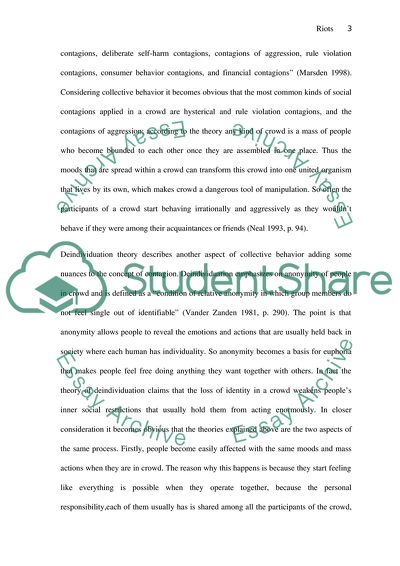Cite this document
(“Are the concepts of contagion and deindividuation adequate Essay - 1”, n.d.)
Retrieved from https://studentshare.org/psychology/1658810-are-the-concepts-of-contagion-and-deindividuation-adequate-explanations-of-rioting-and-looting-behaviour-discuss-this-in-relation-to-social-identity-theory
Retrieved from https://studentshare.org/psychology/1658810-are-the-concepts-of-contagion-and-deindividuation-adequate-explanations-of-rioting-and-looting-behaviour-discuss-this-in-relation-to-social-identity-theory
(Are the Concepts of Contagion and Deindividuation Adequate Essay - 1)
https://studentshare.org/psychology/1658810-are-the-concepts-of-contagion-and-deindividuation-adequate-explanations-of-rioting-and-looting-behaviour-discuss-this-in-relation-to-social-identity-theory.
https://studentshare.org/psychology/1658810-are-the-concepts-of-contagion-and-deindividuation-adequate-explanations-of-rioting-and-looting-behaviour-discuss-this-in-relation-to-social-identity-theory.
“Are the Concepts of Contagion and Deindividuation Adequate Essay - 1”, n.d. https://studentshare.org/psychology/1658810-are-the-concepts-of-contagion-and-deindividuation-adequate-explanations-of-rioting-and-looting-behaviour-discuss-this-in-relation-to-social-identity-theory.


